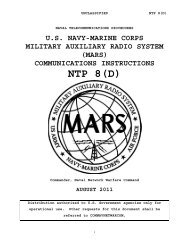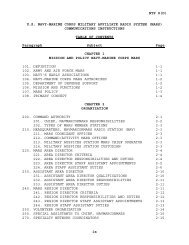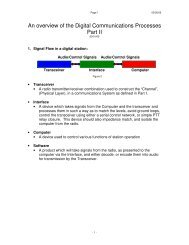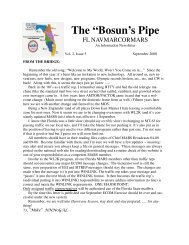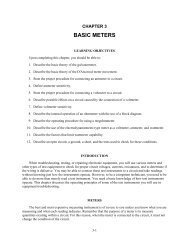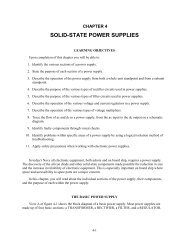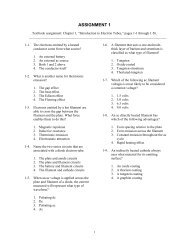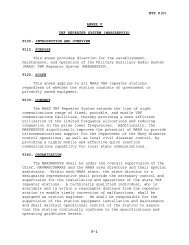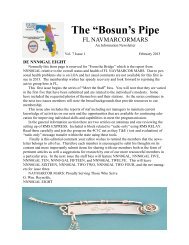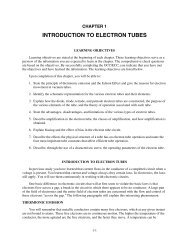NEETS Module 8, Chapter 1
NEETS Module 8, Chapter 1
NEETS Module 8, Chapter 1
You also want an ePaper? Increase the reach of your titles
YUMPU automatically turns print PDFs into web optimized ePapers that Google loves.
is very low under these conditions. So you must decide what conditions you want in coupling two circuitstogether and select the components appropriately.Two important points to remember about impedance matching are as follows. (1) Maximum powertransfer requires matched impedance. (2) To get maximum voltage at the input of a circuit requires anintentional impedance mismatch with the circuit that is providing the input signal.Impedance Characteristics of Amplifier ConfigurationsNow that you have seen the importance of impedance matching the stages in an electronic device,you may wonder what impedance characteristics an amplifier has. The input and output impedances of atransistor amplifier depend upon the configuration of the transistor. In <strong>Module</strong> 7, Introduction toSolid-State Devices and Power Supplies, you were introduced to the three transistor configurations; thecommon emitter, the common base, and the common collector. Examples of these configurations andtheir impedance characteristics are shown in figure 1-14.MEDIUM INPUT Z500Ω- 1500ΩVCCMEDIUM OUTPUT Z30k Ω - 50k ΩINPUTV BBCOMMON EMITTERVCCHIGH OUTPUT Z250Ω- 550 ΩLOW INPUT Z30k Ω - 60k ΩINPUTV EECOMMON BASEVCCHIGH INPUT Z2Ω- 500ΩLOW OUTPUT Z50k Ω - 1500k ΩINPUTV EEOUTPUTCOMMON COLLECTORNTS080114Figure 1-14.—Transistor amplifier configurations and their impedance characteristics.NOTE: Only approximate impedance values are shown. This is because the exact impedance valueswill vary from circuit to circuit. The impedance of any particular circuit depends upon the device(transistor) and the other circuit components. The value of impedance can be computed by dividing thesignal voltage by the signal current. Therefore:1-16




